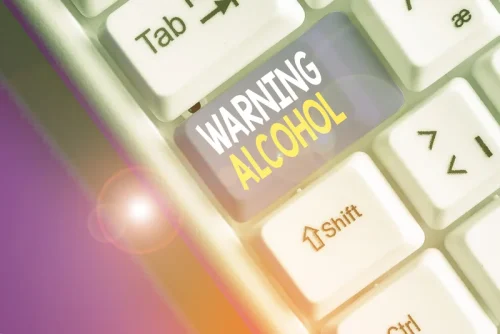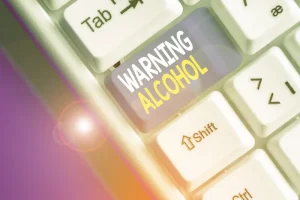
If you or a loved one are considering entering recovery, exploring the option of a recovery residence may be a crucial step toward achieving long-term success and wellness. Future studies should address these limitations, namely research studies should recruit individuals entering outpatient treatment and prospectively follow those who do and do not use recovery housing. Future research could assess housing environments, a broader range of demographic and individuallevel measures, as well as recovery capital at multiple time points to examine the relationship between housing environments and recovery capital and whether this changes over time and mediates key treatment and recovery outcomes. Ideally, such a study would implement random assignment to recovery housing and non–recovery housing settings, but doing so may present a number of logistical and ethical challenges (Polcin, 2015). Future work would benefit from statistical techniques, such as propensity score matching (Rosenbaum et al., 1973), that could strengthen causal inference. Of the 980 clients who received services at the outpatient treatment program during the study period, the majority of clients were male (65%), non-Hispanic White (87%), age 30 or older (68%), and had some sort of postsecondary education (89%; see Table 1).
4. Data analyses
Forty-four percent of the sample had both alcohol and drug diagnoses in their records, and the majority (52%) more than two different types of ICD 10 diagnoses. The overwhelming majority received only one episode of treatment (84%) at a single location (70%) and received an average number of 2.9 services per treatment episode. Table 1 also displays, gender, age, and all measures of service need, service use, and outcomes by recovery housing status. Recovery housing generally refers to alcohol- and drug-free living environments that provide peer support for those wanting to initiate and sustain recovery from alcohol and other drug (AOD) disorders. All participants were currently involved in the criminal justice system (e.g., probation, drug court) and were either HIV positive or had a lifetime history of at least one HIV risk behavior (i.e., men who had sex with men, commercial sex work, injection drug use, or unprotected sex with two or more partners during the past 6 months).
- Future work would benefit from statistical techniques, such as propensity score matching (Rosenbaum et al., 1973), that could strengthen causal inference.
- The authors statistically controlled for participant demographics (gender, race/ethnicity, age, education) and the duration of stay at the recovery residence (on average, 149 days) to try to isolate the direct effect of residence characteristics on recovery outcomes.
- The structured living and accountability enforced within the residence help residents stay committed to their recovery goals, while the peer support and communal living foster a sense of belonging and connection, reducing feelings of isolation and loneliness that can contribute to relapse.
Community
Research has shown that living among other peers in recovery can build social support and instill a sense of community (Ferrari et al., 2002; Jason et al., 2014; Jason et al., 2016; Stevens et al., 2018; Stevens et al., 2015). Opportunities to enhance human capital may be more readily available in recovery housing settings that provide services to expressly enhance recovery knowledge and skills as well as services to address mental health issues and other skills essential for optimal negotiation of daily life. To address shortcomings experienced by clients attending substance use treatment, services that can augment the care that traditional substance use treatment programs provide may be necessary. Indeed, these sorts of services, aptly named recovery support services, are steadily growing in popularity and acceptance (Laudet & Humphreys, 2013).

3.1. Needing a safe and supportive living environment

In its working definition of recovery, SAMHSA recognized the importance of “home” or having a safe and stable place to live as critical to supporting a lifestyle in recovery (Substance Abuse and Mental Health Services Administration, 2011). Recovery housing provides this stability and is one of the more well-researched recovery support services (Laudet & Humphreys, 2013). Further, researchers and practitioners often conceptualize recovery housing as an “aftercare” endpoint for individuals stepping down or recovery residence out of residential treatment or other structured settings (e.g., criminal justice settings). Recovery support services, like recovery housing, seek to augment the resources that individuals bring to their recovery; these basic resources (physical, social, human, and cultural resources) are collectively termed “recovery capital” (Cloud & Granfield, 2008; Granfield & Cloud, 2001). Recovery residences can help residents to build recovery capital across these domains in a variety of different ways, even in residences where no clinical or recovery support services are provided (Cano et al., 2017; Mericle, Carrico, et al., 2019). For example, by providing residents with affordable housing, recovery housing can help residents to accrue financial capital.

3. Recovery housing as a support to keep clients engaged and increase recovery capital

Residents must also commit to a one-month stay, at a minimum, with a preferred commitment of at least three months. Although a hallmark of recovery housing, most notably sober living houses in California, is an open-ended length of stay (Polcin & Henderson, 2008), providers sometimes recommend a minimum length of stay to residents (Mericle et al., 2015; Mericle et =https://ecosoberhouse.com/ al., 2017). In addition to demographic characteristics (e.g., gender, race/ethnicity, age, and educational attainment), we created variables to examine dimensions of service need and service use.
CCAPP Recovery Residences
Recovery residences, sometimes known as sober living houses, have been shown to enhance a variety of recovery outcomes and are highly cost-effective, but little is known about which residence characteristics and practices are most important. The current study addressed this research gap by examining relationships between recovery residence characteristics (organizational, operational, programming) and residents’ recovery outcomes (substance use, criminal justice involvement, employment). Recovery from addiction drug addiction is a complex and multifaceted journey, one that extends far beyond the confines of clinical treatment. It demands a nurturing and supportive environment that fosters healing, growth, and sustained sobriety.
- Indeed, these sorts of services, aptly named recovery support services, are steadily growing in popularity and acceptance (Laudet & Humphreys, 2013).
- This lifestyle is about engaging with a community that understands the challenges and triumphs of the recovery process.
- NARR utilizes evidence-based standards and ethical guidelines to assist dozens of state affiliates in certifying and managing recovery residences across the continuum of care.
- Unlike inpatient treatment settings, recovery residences offer a less restrictive environment while still providing essential support and resources for maintaining sobriety.
What are recovery residences?
Among the diverse strategies and interventions available, the role of a recovery residence stands out as indispensable. Serving as a bedrock of the recovery process, these residences provide individuals with a haven where they can navigate the challenges of addiction recovery with structure, support, and camaraderie. From understanding their fundamental nature to delving into their pivotal role in addiction recovery, we shed light on why these havens of sobriety are indispensable for individuals seeking to rebuild their lives after addiction. A Recovery Residence is a safe, healthy, and substance free living environment where those recovering from addiction can live. A recovery residence is like a family home free of drugs and alcohol, where everyone helps each other out. Recovery residences include different types of living environments like halfway houses, three-quarter houses, transitional living facilities, and sober living homes.
Understanding What is a Recovery Residence
Although recovery residences do not typically offer structured activities or formal counseling, some operate according to established standards and guidelines that encourage resident participation in mutual help groups, enforce house rules, and promote resident accountability and communal learning. By providing affordable housing, peer support, and a resource rich neighborhood, recovery residences offer residents the opportunity to build financial, social, and community-based recovery capital. These continuing care facilities are shown to facilitate positive recovery outcomes (e.g., higher rates of employment, reduced substance use, lower criminal activity) that are maintained as far out as 18 months. However, few studies have looked at the individual contributions of specific recovery residence characteristics to these recovery outcomes. Given that recovery residence models vary greatly, a more detailed understanding of facility characteristics and their relationship to recovery outcomes can ultimately help to inform best practices and streamline recommendations and referrals. Guided by studies examining the organizational and management factors of treatment facilities and focusing on a high-risk population involved in the criminal justice system, this study is one of the first to assess the relationships between recovery residence characteristics and residents’ recovery outcomes.
Purple Treatment Center also places a strong emphasis on aftercare, offering continued support and engagement with the Purple community through our one-of-a-kind alumni program, to help residents maintain their recovery lifestyle. This gives opportunities for alumni to stay involved and provide support to those newly embarking on their recovery journey. Our mission at NATIONAL ALLIANCE FOR RECOVERY RESIDENCES (NARR) is to enhance access to quality recovery residences by setting standards, providing education, and advocating for those in addiction recovery. At NARR, we take pride in fostering a network of affiliates and providers that exemplify the highest standards of recovery care. Our collaborative approach underscores the belief that there is strength in numbers, bringing together diverse recovery residences across the nation to share best practices, resources, and unwavering support for individuals in their journey towards sustainable recovery. The degree of monitoring and regulation in recovery residences varies widely from setting to setting.
